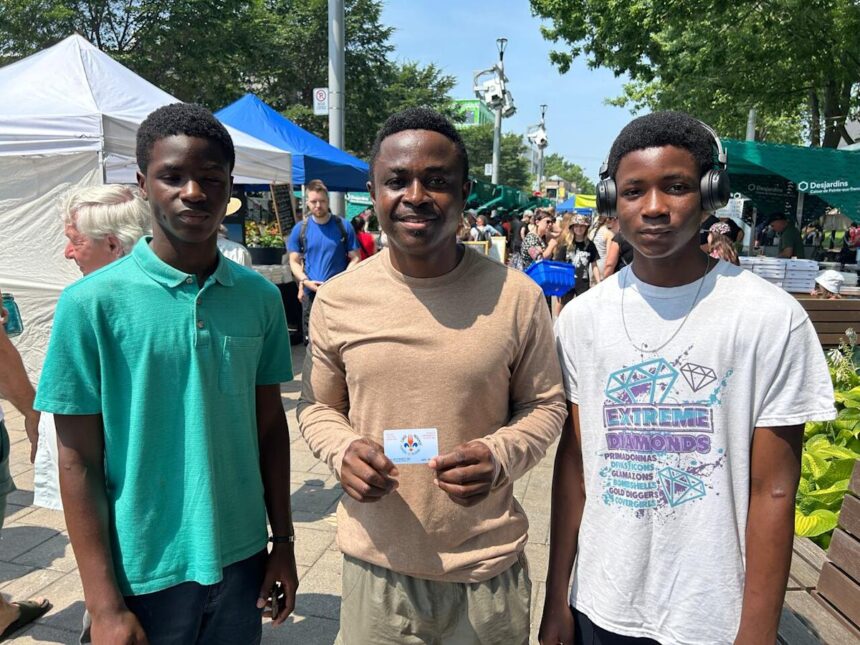The scent of fresh produce and the bustle of weekend shoppers at Montreal’s Jean-Talon Market masks a deeper mission unfolding behind the scenes. As winter approaches, market officials have partnered with local community organizations to address a growing concern—food insecurity affecting thousands across the city.
“We’re seeing families making impossible choices between heating their homes or putting food on the table,” says Sophie Tremblay, director of operations at Jean-Talon Market. “Our partnership isn’t just about donations—it’s about creating sustainable food solutions for vulnerable Montrealers.”
The initiative, launched last month, connects surplus market produce with community kitchens and food banks across the island. What makes this program unique is its focus on fresh, nutritious options rather than the typical non-perishable donations that dominate food assistance programs.
The timing couldn’t be more critical. According to Moisson Montréal, the city’s largest food bank, requests for emergency food assistance have increased by 24% since 2021. The organization now serves over 567,000 people monthly—roughly a quarter of whom are children.
Market vendor Pierre Desrochers has participated since day one. “I used to throw out at least 15% of my produce weekly—perfectly good food that just didn’t sell,” he explains while arranging vibrant displays of local carrots and potatoes. “Now that food goes directly to families who need it, and I sleep better knowing nothing goes to waste.”
The initiative addresses multiple challenges simultaneously. Beyond fighting hunger, it tackles food waste—a significant environmental concern. The Quebec Food Banks Association estimates that nearly 60% of all food produced in the province is wasted, while one in eight households experiences food insecurity.
Community organizer Fatima Hassan coordinates collections three times weekly. “What’s beautiful about this program is the dignity it provides,” she notes. “Recipients aren’t just getting packaged goods—they’re cooking with the same quality ingredients sold to market customers.”
Hassan’s team transforms the collected produce into prepared meals at community kitchens throughout neighborhoods like Parc-Extension and Saint-Henri, where food insecurity rates remain stubbornly high. They also distribute fresh ingredient kits with recipe cards translated into six languages to reflect Montreal’s diverse communities.
The initiative has gained attention from city officials. Montreal Mayor Valérie Plante recently highlighted the program during a council meeting on urban sustainability. “This represents the kind of community collaboration we need—one that supports our most vulnerable while addressing climate goals through reduced food waste,” Plante stated.
But challenges remain. Transportation logistics, storage limitations, and the seasonal nature of local produce present ongoing hurdles. The team is now seeking funding to purchase refrigerated vehicles and expand cold storage capabilities at participating community centers.
Local nutritionist Dr. Carmen Rodriguez volunteers weekly, developing recipes that maximize nutritional value while respecting cultural food preferences. “Food security isn’t just about calories—it’s about nutrition and cultural appropriateness,” she emphasizes. “What we’re doing here honors both.”
The initiative has already distributed over 2,800 kilograms of fresh produce since September, but organizers recognize this barely scratches the surface of need. Plans are underway to expand the model to other public markets across the city, including Atwater and Maisonneuve markets by early next year.
For recipients like Diane Côté, a single mother of three living in Hochelaga-Maisonneuve, the program has transformed her family’s diet. “Before, I bought whatever was cheapest—often processed foods that would stretch further,” she says. “Now my kids are eating vegetables I could never afford. They’re actually excited about broccoli, if you can believe it.”
As Montreal’s harsh winter approaches, market director Tremblay acknowledges the program will face its most significant test. “Local production slows dramatically, but hunger doesn’t take a season off,” she says. “We’re working with greenhouse growers and exploring preservation workshops to extend our impact year-round.”
The initiative represents a shift in thinking about food insecurity—moving beyond emergency response toward community food sovereignty. By connecting local food systems directly with vulnerable populations, organizers hope to build more resilient neighborhoods that can better weather economic and environmental challenges.
For vendors like Desrochers, the program reconnects him with food’s fundamental purpose. “I’m a fifth-generation farmer,” he reflects, gazing across the bustling market corridor. “My grandparents would be proud to see nothing wasted and everyone fed. Sometimes the old values make the most sense in solving today’s problems.”






